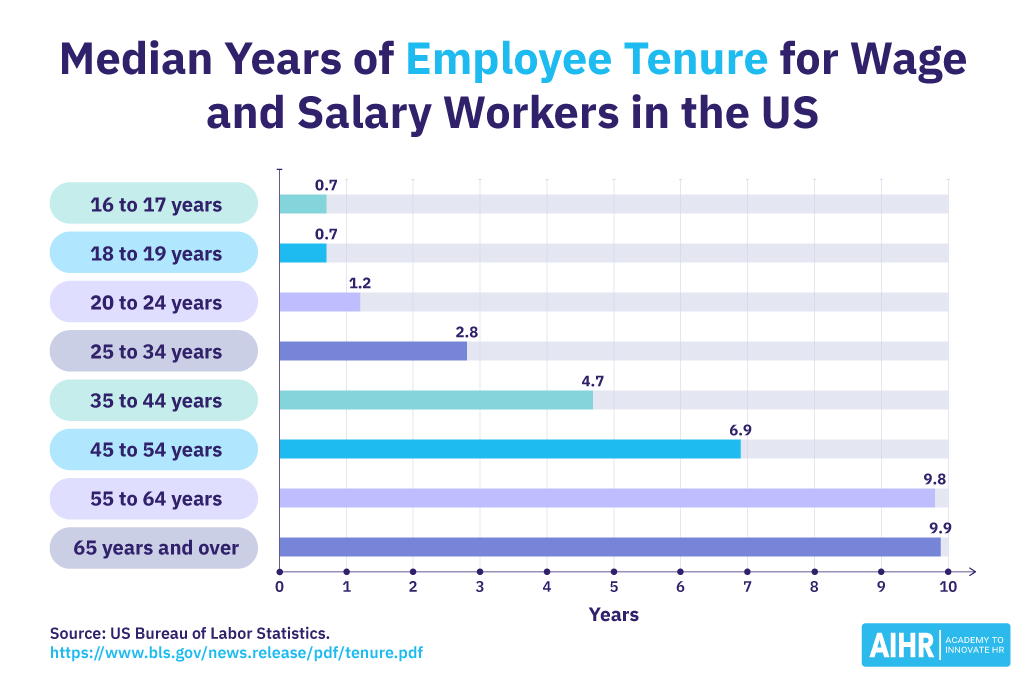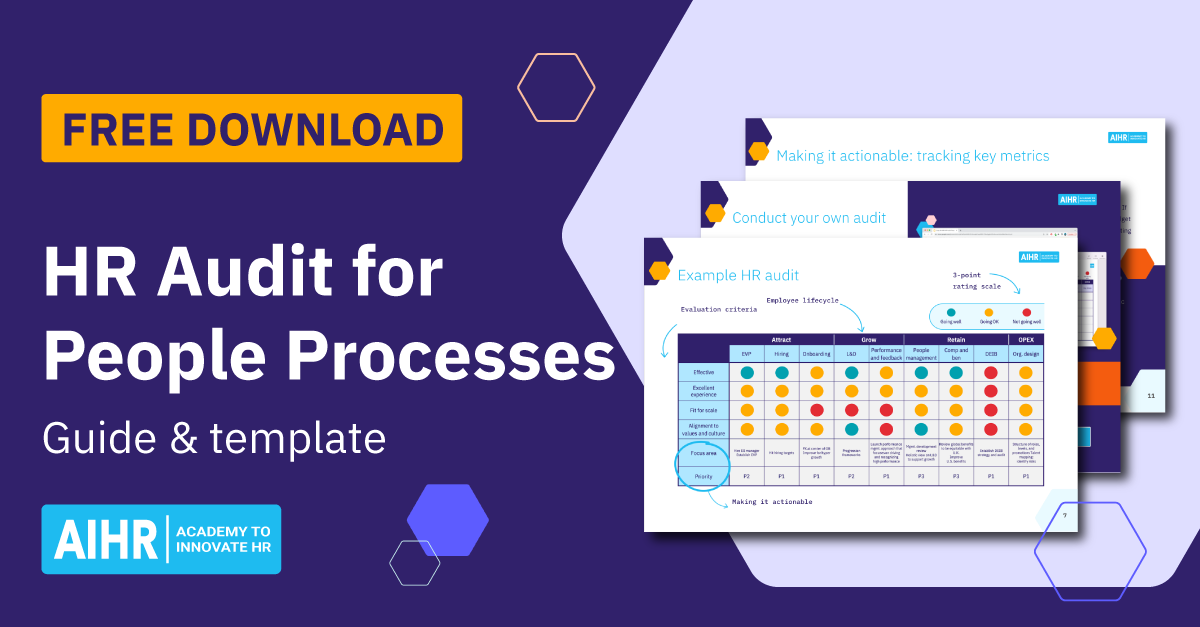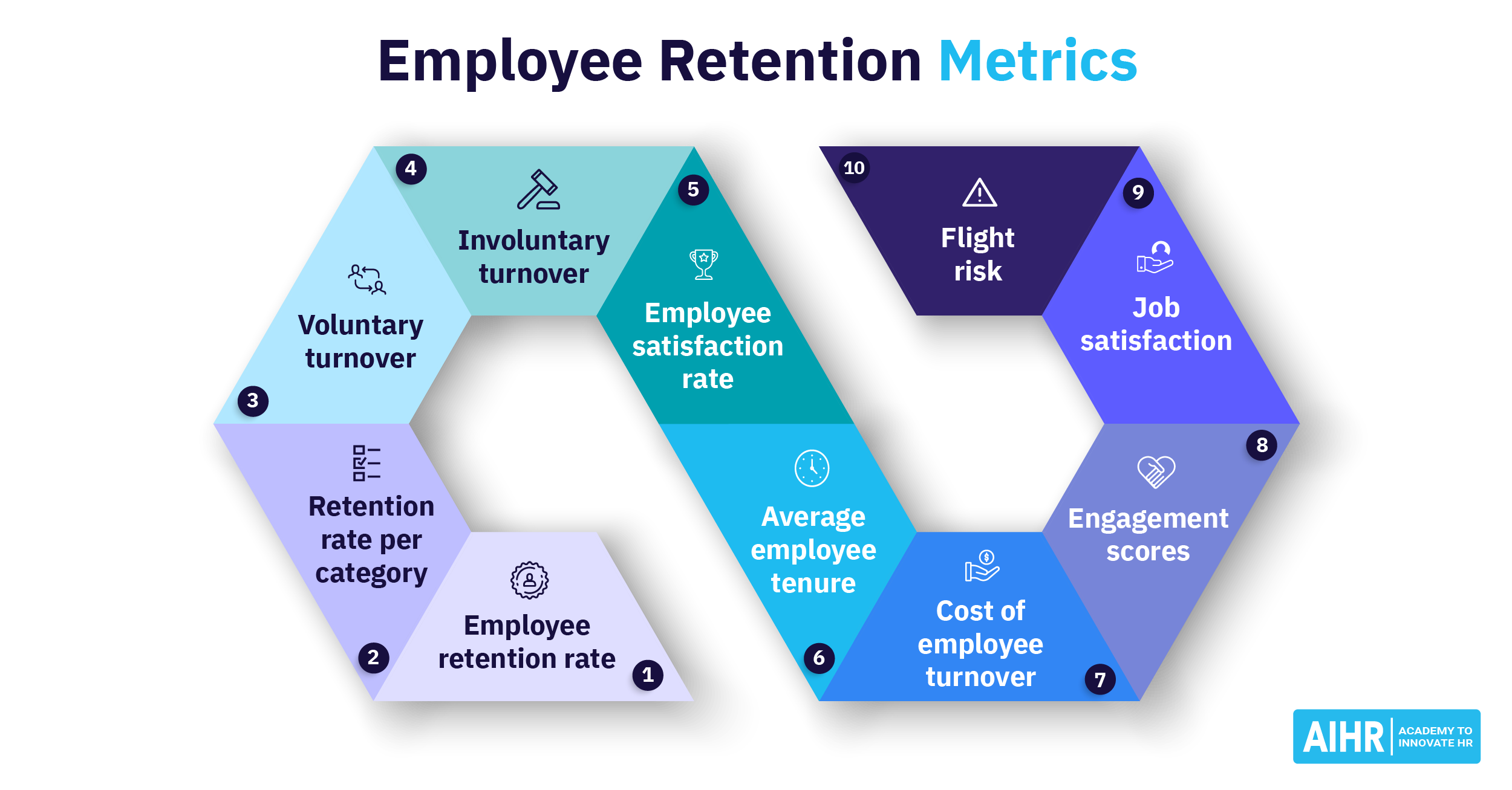Employee Tenure
Employee tenure meaning
Employee tenure, also known as job tenure, refers to the duration of time an employee works for a single company or organization before moving on to another job or employer. It is often measured in years but can also be expressed in months for shorter employment durations.
Employee tenure is an important metric for organizations as it can provide insights into employee loyalty, satisfaction, and the effectiveness of retention strategies. Longer tenures typically suggest a stable and satisfied workforce, while shorter tenures might indicate issues with employee engagement, job satisfaction, or organizational culture.
There are two types of job tenure: short and long.
- Short tenure: Short-tenured employees work at an organization for a brief period, usually less than five years. An example would be a recent graduate who joined a startup but left after a year or so for a better opportunity.
- Long tenure: Long-tenured employees work at a company for an extended period of time, usually five or more years. An example would be a professor who has been teaching at a university for over 20 years.
What is the average employee tenure?
The Bureau of Labor Statistics (BLS) reports that the average employee tenure is 4.1 years. Below is BLS’s data for average employee tenure by industry:
| Sector | Industry | Average tenure |
|---|---|---|
| Private sector | All private Agricultural Manufacturing Wholesale/retail Transportation Information Financial activities Real estate Professional/business services Education and health services Leisure and hospitality | 3.1 years 4.7 years 5.2 years 3.1 years 3.7 years 4.2 years 4.5 years 3.9 years 3.4 years 4 years 2 years |
| Public sector | Overall public Federal government State government Local government | 6.8 years 7.5 years 6.3 years 6.9 years |
| Average | 4.1 years |
What is a good employee tenure?
A good government employee tenure is typically more than five years. Government employees often have better benefits than private sector employees, so they tend to stay on board for longer.
Within the private sector, the shortest tenures (below the median of 4.1 years) are in leisure and hospitality, wholesale and retail, and professional and business services. Manufacturers have the longest average tenure in the private sector, which is promising since the industry has seen drastic changes since COVID-19 began.

Tenure vs. seniority
Tenure and seniority are two distinct concepts. Tenure refers to the length of time an employee has worked for a particular employer, while seniority is the employee’s rank or status within the organization. Seniority is often determined by tenure but is also influenced by position and responsibilities.
Let’s look at the differences in more detail.
Definition
Length of time an employee has worked for a particular organization
Rank or status of an employee within an organization based on tenure and other factors
Measurement
Units of time (e.g., months, years) since the employee’s start date with the organization
Position or rank within the company, influenced by tenure, performance, and role complexity
Implications for employees
Employee is viewed as loyal and experienced, and enjoys job security
Employee holds significant roles and greater influence in decision-making processes
Example
An employee who has been with the company for 10 years
A sales director who’s been at the company for four years holds higher seniority than a sales associate who’s been with the company for eight years, due to the director’s higher position and more complex responsibilities
Advantages and disadvantages of a long employee tenure
Advantages
- Increased loyalty to the organization: Loyal, content employees lead to a thriving, productive workforce. Employees who are happy with an organization will want to engage and perform well. Long-lasting, committed employees boost employer branding to attract top talent, customers, and partners.
- Reduced turnover costs: Recent research from the SHRM indicates that the cost of hiring a new employee can be three to four times the position’s salary, due to recruitment, interim contractors, unemployment, and legal fees. Additionally, onboarding and training new hires, along with the negative impact on morale and productivity from high turnover, further escalate expenses.
- Greater expertise and knowledge: Long-term employees possess extensive knowledge about the company and its culture, processes, and customers, which can contribute significantly to organizational stability and continuity.
Disadvantages
- Potentially limited learning and advancement opportunities: An employee may fall into a pattern of working on the same tasks with the same colleagues for a long time. This can limit their skills expansion, knowledge acquisition, and growth opportunities.
- Complacency that leads to lower performance: Employees who’ve stayed at an organization for a long time may not be motivated to go above and beyond. Meeting their minimum goals is good enough for them, and their long tenure may cause managers to overlook performance gaps.
- Succession planning challenges: Long-tenured employees are highly valuable to an organization and generally occupy critical roles. Having a succession plan in place is essential to ensure their roles are not left vacant for long when these employees retire or resign.
HR tip
Consider giving employee tenure gifts like gift cards, cash or merchandise, or host a company celebration to honor milestone anniversaries. For long-tenured employees, present a personalized recognition letter from company leadership and awards such as travel vouchers. Showing appreciation through these gestures demonstrates the organization’s gratitude for long-tenured employees’ loyalty and commitment.
How can you calculate employee tenure?
In Excel, you can easily calculate your organization’s average employee tenure based on its staff’s employment start and end dates.
- Format your list as a table.
- Create three columns: Employee name (A), start date (B), and end date (C).
- In column D, you can calculate employee tenure using the following formula:
=IF([end-date]=””;(((TODAY()-[start-date])/365));([end-date]-[start-date])/365) - The =IF([end-date]=”;(((TODAY()-[start-date])/365)) part of the formula checks if there’s an end date in Column C. If there isn’t (i.e., the employee is still working at the company), it uses today’s date (TODAY()) as the end date.
- The formula then subtracts the start date from the end date to get the tenure in days.
- The formula in Excel will look like this: =IF(C2=””;(((TODAY()-B2)/365));(C2-B2)/365)
You can also use the calculator below to calculate the tenure of your employees:
You can break it down by category (e.g., tenure per department, division, or team) and add details like each employee’s age, gender, or job level. You can also incorporate influential factors – for example, an employee with less than five years of work experience in total won’t have a long tenure.
This data will give you reliable insight into the state of your organization. Do you see a higher turnover rate in one department? Consider possible reasons like the average work experience or educational background of its staff. Use this information to guide your business strategies and decisions.
How can HR help increase employee tenure?
HR can play a main role in increasing employee tenure by creating a positive work environment, offering learning and development (L&D) opportunities, and making sure employees feel valued and supported. Here are several strategies HR can implement to enhance employee tenure:
- Develop a robust recruitment process
- Foster career development and progression
- Drive employee engagement initiatives
- Arrange flexible work options
- Provide appropriate compensation and benefits
- Have constructive performance and feedback mechanisms in place
- Promote an inclusive and diverse culture
- Recognize employees for performance, tenure, ideas, etc.
FAQ
A tenured employee is someone who’s been with a company or organization for a long time, often gaining job security and certain rights or privileges due to their sustained service and contributions. Tenure can provide protection against arbitrary dismissal and may come with benefits such as increased salary, seniority, and influence within the organization.
The average employee tenure varies significantly, depending on factors like industry, role, geographic location, and economic conditions. Data from the U.S. Bureau of Labor Statistics shows that the median employee tenure is approximately 4.1 years. Younger employees tend to have shorter tenures compared to older workers, reflecting generational differences in attitudes toward job stability and career progression. Additionally, public sector employees usually have longer tenure than those in the private sector due to differences in job security and benefits.
An example of employee tenure is employment at the same company for 10 years. This reflects the employee’s duration of employment with that particular employer. For instance, a marketing manager who started working at a technology firm in 2014 and is still employed there in 2024 has a tenure of 10 years.









